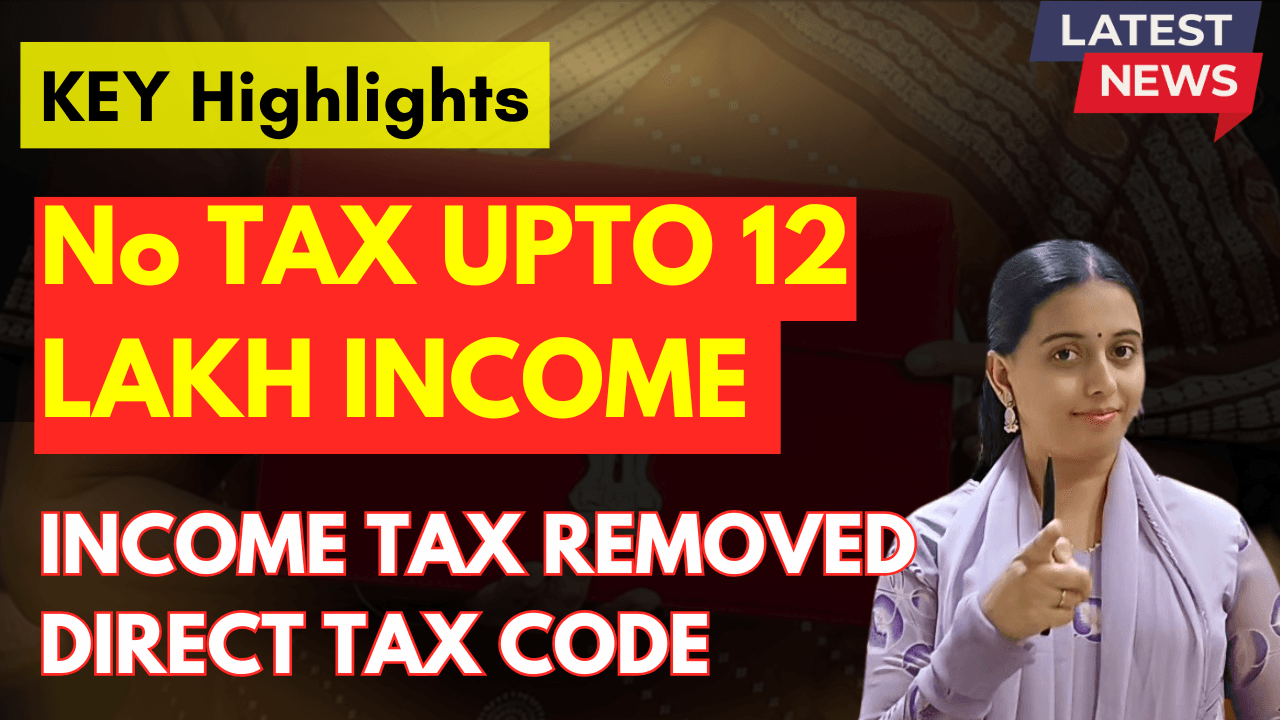Major Income Tax Changes for FY 2025-26
Major Income Tax Changes for FY 2025-26 The Union Budget 2025 has introduced significant changes to the income tax structure, bringing relief to middle-income earners while making substantial revisions to the rebate system under Section 87A. This budget aims to simplify tax compliance and enhance revenue collection by moving towards a unified tax regime. Below, we explore the key changes in income tax for the financial year 2025-26 and their implications for taxpayers.
For Better Understanding watch – https://youtu.be/hPSKbEuEHTA
Key Highlights of Income Tax Changes
- No Tax on Income Up to Rs. 12 Lakh
- Under the new tax regime, individuals earning up to Rs. 12 lakh per annum will not have to pay any income tax. Major Income Tax Changes for FY 2025-26
- This is made possible by an increase in the rebate limit under Section 87A, which has been raised from Rs. 25,000 to Rs. 60,000.
- The change is expected to provide significant relief to middle-class taxpayers, encouraging higher disposable income and savings.

- Changes in Rebate Under Section 87A
- The rebate under Section 87A has increased substantially, making income up to Rs. 12 lakh effectively tax-free.
- However, this rebate does not apply to special income types such as capital gains from investments.
- Individuals earning through salaries or business income can benefit from this rebate, while those earning from special categories must comply with existing tax structures.
- Revised Income Tax Slabs Under the New Tax Regime
- The new tax slab rates have been modified to accommodate different income brackets:
- Income up to Rs. 12 lakh – No tax (due to the rebate under Section 87A)
- Income from Rs. 12 lakh to Rs. 15 lakh – 15% tax
- Income from Rs. 15 lakh to Rs. 20 lakh – 20% tax
- Income above Rs. 20 lakh – 25% tax
- These revised slabs make the tax structure more progressive, ensuring higher contributions from high-income earners.
- The new tax slab rates have been modified to accommodate different income brackets:
- Old Tax Regime Remains Unchanged, but Its Removal Is Expected
- Despite the introduction of the new tax regime, the old tax regime remains unchanged for now.
- The government has expressed its intent to eliminate the old tax regime in the near future due to widespread misuse of deductions and exemptions.
- The removal aims to streamline tax compliance, reduce fraudulent deductions, and enhance tax transparency.
Impact on Taxpayers
Benefits for Middle-Income Earners
- Salaried individuals and small business owners earning up to Rs. 12 lakh will experience the most significant benefits, as they will not need to pay any tax.
- Higher disposable income can lead to increased savings and investments, boosting economic activity.
Implications for High-Income Groups
- Taxpayers earning above Rs. 12 lakh will see a new tax slab structure with progressive rates up to 25%.
- While the increased rebate reduces the burden on lower brackets, individuals with annual incomes above Rs. 15 lakh will experience a higher tax liability.
Impact on Investors and Special Income Earners
- The rebate does not apply to special income types such as capital gains from stock trading, property sales, or dividends.
- Investors in stocks, mutual funds, and real estate will still be taxed according to existing capital gains rules.
- This clarification resolves previous confusion regarding the applicability of Section 87A.
Future Taxation Trends: What to Expect?
Possible Removal of the Old Tax Regime
- With the government planning to phase out the old tax regime, all taxpayers may soon have to adopt the new tax regime.
- This shift will eliminate exemptions and deductions like HRA, LTA, and Section 80C benefits.
Changes in TDS and TCS Regulations
- The budget also hints at upcoming modifications in TDS (Tax Deducted at Source) and TCS (Tax Collected at Source) rules.
- Future discussions will clarify the impact of these changes on salary payments, business transactions, and international remittances.
Conclusion
Budget 2025 brings a significant shift towards a simplified and streamlined tax system, benefiting lower and middle-income earners while ensuring better compliance from high-income individuals. The substantial increase in the Section 87A rebate makes incomes up to Rs. 12 lakh tax-free, while new tax slabs ensure a progressive contribution from higher earners. However, the exclusion of capital gains and special income from this rebate means investors and high-income professionals must still adhere to separate taxation rules. With the government moving toward removing the old tax regime, taxpayers should start adapting to the new structure for a smoother transition in future financial years.
Stay updated for further announcements on TDS, TCS, and other tax regulation changes in upcoming discussions.
For More Information : https://taxgyany.com/blogs/

